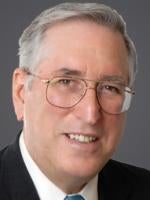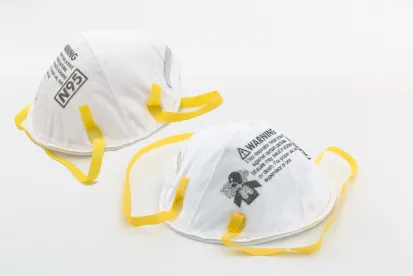After relaxing enforcement on the use of expired N95 respirators and on their extended use and reuse, late on April 3, 2020, the Occupational Safety and Health Administration (OSHA) issued an Enforcement Guidance for Use of Respiratory Protection Equipment Certified under Standards of Other Countries or Jurisdictions During the Coronavirus Disease 2019 (COVID-19) Pandemic. The new guidance supplements, but does not replace, previous guidance.
Acknowledging the current overwhelming demand for N95 filtering facepiece respirators (FFRs) in healthcare and other industries, OSHA’s enforcement guidance permits employers, under certain circumstances, to use “FFRs, air-purifying elastomeric respirators, and compatible filters” that are not approved by the National Institute for Occupational Safety and Health (NIOSH) and were certified in the following jurisdictions: Australia, Brazil, China, the European Union, Japan, South Korea, and Mexico.
When to Rely on Foreign Respirators
According to OSHA, employers, except for certain healthcare providers, as a precursor to the use of foreign respirators employers must:
-
Maintain their current respiratory protection program, as required by 29 C.F.R. 1910.134.
-
Reassess the engineering controls, work practices, and administrative controls in their workplaces to identify any changes than may decrease the need for N95 respirators.
Once employers have fulfilled these two requirements, they may “[p]rioritiz[e] efforts to acquire and use equipment in the following order:”
-
NIOSH-certified N95 respirators.
-
NIOSH-certified alternatives to the N95 respirator (e.g., N99, N100, P95, P100, and powered air-purifying respirators (PAPR)).
-
Expired NIOSH-certified N95 respirators, or expired NIOSH-certified alternatives to the N95 respirator, to the extent permitted by OSHA’s April 3 guidance on their use.
-
Respirators and filters certified under standards of Australia, Brazil, Europe, Japan, South Korea, or Mexico, or “equipment certified in accordance with standards of the People’s Republic of China . . . manufactured by a NIOSH certificate holder.”
-
“[E]quipment certified in accordance with standards of the People’s Republic of China, the manufacturer of which is not a NIOSH certificate holder.”
-
Facemasks (e.g., medical masks, procedure masks).
OSHA believes that foreign respirators may provide greater protection to workers than surgical masks or homemade masks. The agency reminds employers to ensure that users perform a seal check every time they use a respirator, to use proper donning/doffing techniques, and to train workers to visually inspect their respirators. OSHA emphasizes that a respirator must be discarded if its structural and functional integrity of any part of it is compromised.
Healthcare Providers
For healthcare providers performing surgical procedures on patients infected with, or potentially infected with COVID-19, or performing “procedures expected to generate aerosols or procedures where respiratory secretions are likely to be poorly controlled (e.g., cardiopulmonary resuscitation, intubation, extubation, bronchoscopy, nebulizer therapy, sputum induction),” OSHA states that respirators from China may not be used unless there is no other alternative.
Why Is China at the Bottom of the List?
In a crucial footnote, OSHA explains that NIOSH has observed that products from China “may not meet the requirements of the standards to which they are certified and may not offer or sustain the protection claimed as typically expected when using NIOSH-approved N95 respirators.” In other words, a sizable number of respirator products sold from vendors in China are substandard or counterfeit. NIOSH has an entire web page devoted to helping the public identify counterfeit respirators.
List of Alternative Respirators Certified in Other Countries
OSHA’s guidance includes the following table to show which respirators are approved under standards used in other jurisdictions that are similar to NIOSH-approved N95 respirators. OSHA’s “Table 1” is replicated in its entirety below.
|
Country |
Performance Standard |
Acceptable Product Classification |
May Be Used in Lieu of NIOSH-Certified Products Classified as |
|
Australia |
AS/NZS 1716:2012 |
P2 |
N95 |
|
P3 |
N99 or lower |
||
|
Brazil |
ABNT/NBR 13698:2011 |
PFF2 |
N95 |
|
PFF3 |
N99 or lower |
||
|
China (People’s Republic of) |
GB 2626-2006 |
KN/KP95 |
N95 |
|
KN/KP100 |
N99 or lower |
||
|
Europe |
EN 149-2001 |
P2 |
N95 |
|
P3 |
N99 or lower |
||
|
Japan |
JMHLW-2000 |
DS/DL2 |
N95 |
|
DS/DL3 |
N99 or lower |
||
|
Korea (Republic of) |
KMOEL-2017-64 |
Special 1st |
N95 |
|
Mexico |
NOM-116-2009 |
N95 |
N95 |
|
R95 |
R95 or lower |
||
|
P95 |
P95 or lower |
||
|
N99 |
N99 or lower |
||
|
R99 |
R99 or lower |
||
|
P99 |
P99 or lower |
||
|
N100 |
N100 or lower |
||
|
R100 |
R100 or lower |
||
|
P100 |
P100 or lower |





 />i
/>i

